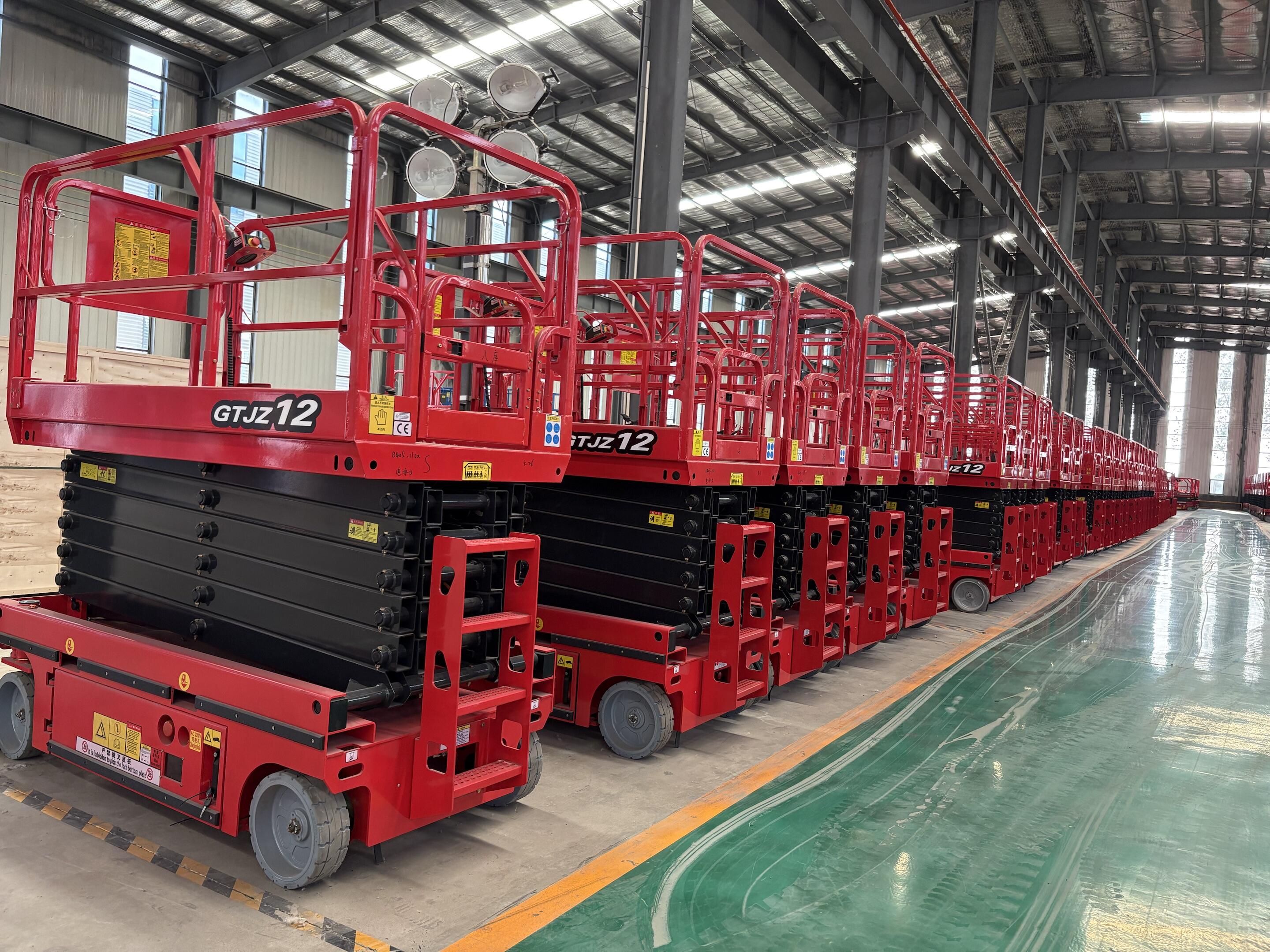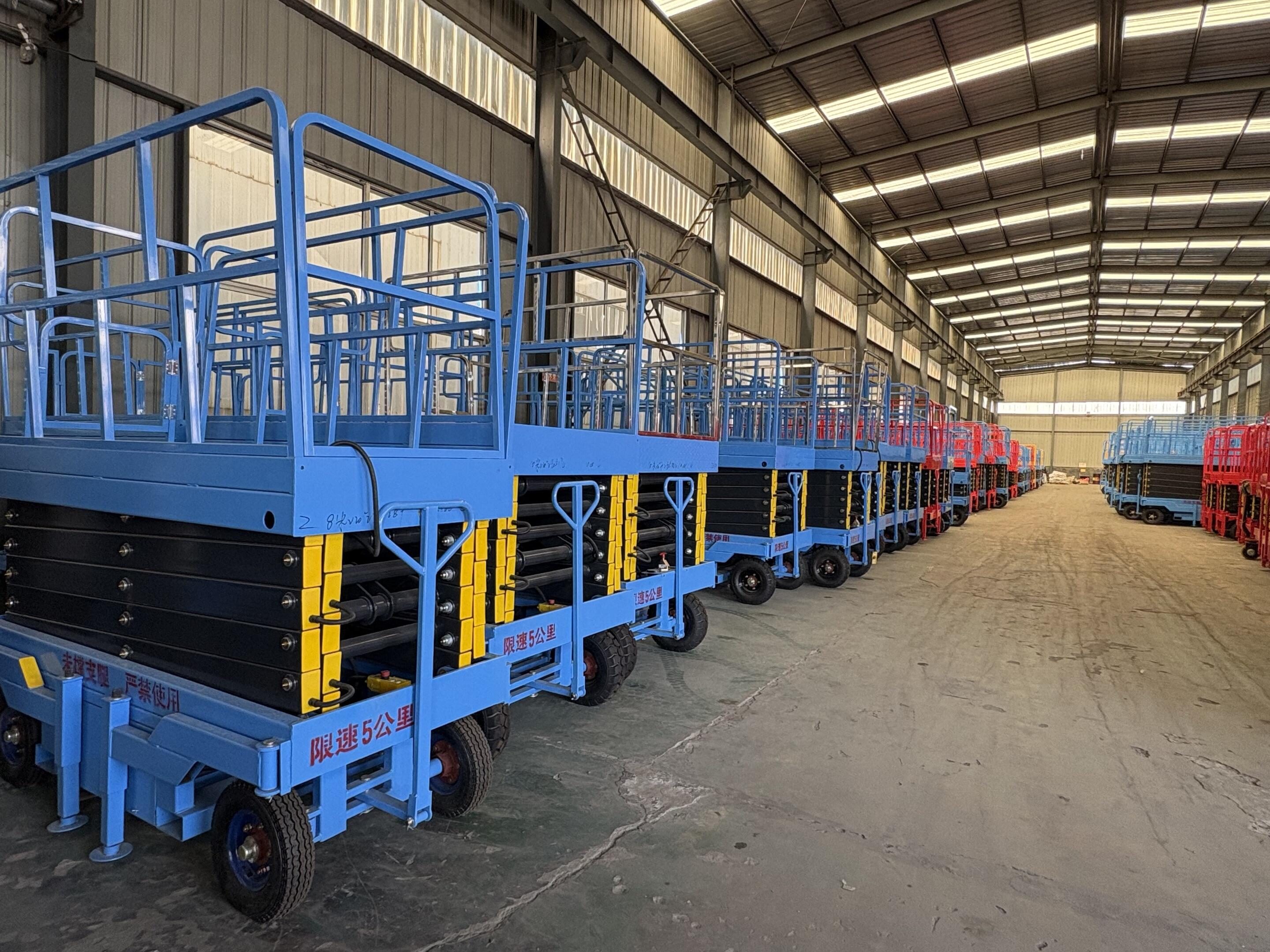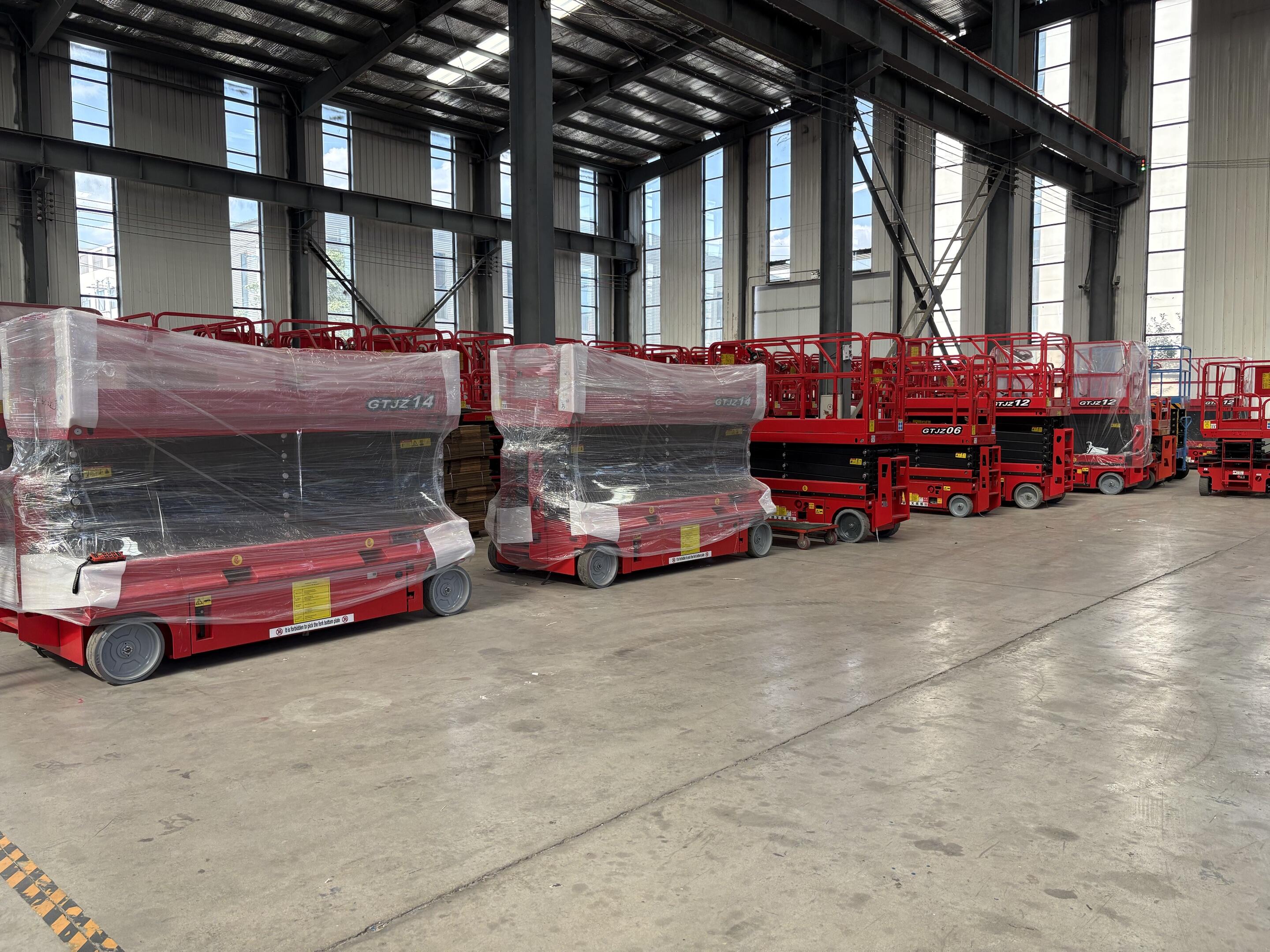A goods scissor lift is a specialized material handling equipment designed to lift and transport goods vertically and horizontally, offering a safe and efficient solution for moving heavy or bulky items in various industrial, commercial, and logistics settings. Unlike traditional forklifts or cranes, it features a scissor-like mechanism that extends vertically to raise the platform, providing stable and controlled lifting for goods of different sizes and weights. This equipment is widely used in warehouses, factories, distribution centers, and retail facilities, where efficient vertical movement of goods is essential to maximize storage space and streamline operations. The core structure of a goods scissor lift consists of a sturdy platform, a scissor mechanism, a hydraulic or electric lifting system, and a base frame. The platform is typically made of high-strength steel to withstand heavy loads, with a non-slip surface to prevent goods from sliding during lifting or lowering. The scissor mechanism, composed of interconnected metal bars, extends and retracts to adjust the platform height, ensuring smooth and stable movement. The lifting system, often hydraulic, uses pressurized fluid to drive the scissor mechanism, while electric models utilize motors and screws for quieter operation, making them suitable for indoor environments where noise is a concern. The base frame provides a solid foundation, with wheels or casters for mobility, allowing the lift to be moved to different locations as needed. One of the key advantages of a goods scissor lift is its ability to handle a wide range of load capacities, from a few hundred kilograms to several tons, depending on the model. This versatility makes it suitable for lifting everything from small boxes and crates to large machinery and palletized goods. The lifting height varies, with some models reaching up to 10 meters or more, enabling access to high storage racks, mezzanines, or elevated work areas that would be difficult to reach with other equipment. This vertical reach helps businesses maximize their use of vertical space, reducing the need for expansive floor areas and increasing storage efficiency. Safety is a top priority in the design of a goods scissor lift, with multiple features integrated to protect both the goods and the operators. Overload protection systems prevent the lift from operating if the load exceeds its rated capacity, reducing the risk of structural damage or tipping. Emergency stop buttons are strategically placed to halt operations immediately in case of an emergency, while safety rails or barriers around the platform prevent goods from falling off during movement. Many models also include a descent control system that ensures the platform lowers at a controlled speed, even if there is a hydraulic or mechanical failure. Additionally, the scissor mechanism is designed to lock in place at any height, providing stability when loading or unloading goods at elevated positions. Maneuverability is another important feature of a goods scissor lift, especially in busy warehouses or facilities with limited space. Mobile models are equipped with durable wheels or casters, some of which are steerable, allowing operators to move the lift easily through narrow aisles, doorways, and around obstacles. Compact designs are available for use in tight spaces, while larger, stationary models are installed in fixed locations for repetitive lifting tasks, such as loading goods onto trucks or moving items between different levels of a facility. The ability to move the lift to where it is needed most enhances operational flexibility, making it a valuable asset in dynamic work environments. The operation of a goods scissor lift is straightforward, with intuitive controls that allow operators to raise, lower, and move the platform with precision. Hydraulic models are controlled via levers or buttons that regulate the flow of hydraulic fluid, while electric models use digital controls for smoother and more precise adjustments. Many modern goods scissor lifts also feature proportional controls, enabling operators to adjust the lifting speed based on the load and the environment, ensuring gentle handling of fragile goods. Training requirements are minimal, with most operators able to master the basics quickly, though proper training on safety protocols is essential to prevent accidents. Versatility is a standout feature of a goods scissor lift, as it can be customized with various accessories to suit specific applications. Foldable sides or extendable platforms increase the usable area for larger goods, while ramps or rollers facilitate easy loading and unloading of pallets or wheeled items. Some models are equipped with tilt functions, allowing the platform to angle slightly to accommodate irregularly shaped goods or to align with truck beds or storage racks. Weatherproof designs are available for outdoor use, with features like waterproof motors and rust-resistant coatings to withstand exposure to rain, snow, and other elements, making them suitable for loading docks, construction sites, or outdoor storage areas. Maintenance of a goods scissor lift is relatively simple, contributing to its long lifespan and reliable performance. Regular checks include inspecting the scissor mechanism for wear or damage, ensuring hydraulic fluid levels are adequate and free from contamination, and testing safety features like emergency stops and overload protection. Lubricating moving parts, such as hinges and pivot points, prevents friction and extends the life of the mechanism. Electric models require periodic checks of the motor, wiring, and batteries to ensure efficient operation, while hydraulic models need occasional replacement of seals and hoses to prevent leaks. Proper maintenance not only ensures safety but also reduces downtime, keeping operations running smoothly. Cost-effectiveness is another benefit of using a goods scissor lift, as it eliminates the need for manual lifting or more expensive equipment like cranes. By reducing the physical strain on workers, it lowers the risk of workplace injuries and associated costs, such as medical expenses and lost productivity. Its efficiency in moving goods vertically and horizontally also speeds up loading and unloading processes, increasing overall productivity and reducing labor costs. The initial investment in a goods scissor lift is offset by its long-term durability and low maintenance requirements, making it a cost-effective solution for businesses of all sizes. Applications of a goods scissor lift are diverse, spanning multiple industries. In warehouses and distribution centers, it is used to retrieve and store goods in high racks, maximizing storage density. In retail, it helps stock high shelves with merchandise, especially in large stores or supermarkets. In manufacturing facilities, it transports raw materials to production lines and moves finished products to packaging or shipping areas. Loading docks use goods scissor lifts to bridge the gap between trucks and warehouses, ensuring smooth transfer of goods regardless of height differences. Construction sites utilize them to lift building materials to elevated work areas, while logistics companies rely on them for efficient sorting and handling of packages. In conclusion, a goods scissor lift is an indispensable tool for efficient and safe material handling, offering versatility, stability, and convenience across a wide range of applications. Its ability to lift heavy goods to various heights, combined with its mobility and safety features, makes it a valuable asset for businesses looking to optimize their operations, maximize storage space, and reduce workplace risks. Whether used indoors or outdoors, for light or heavy loads, a goods scissor lift delivers consistent performance, proving its worth as a key component of modern material handling systems.


